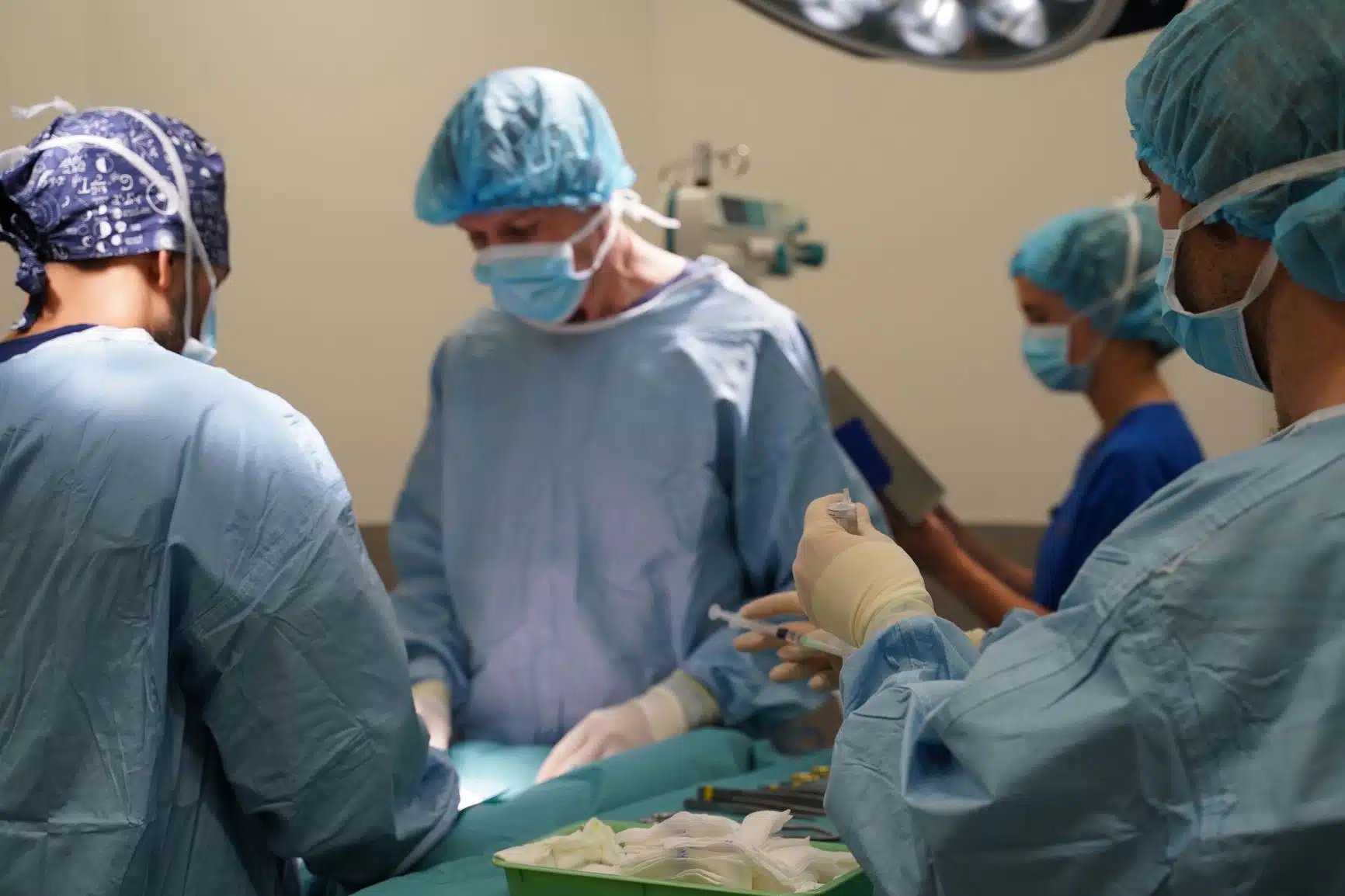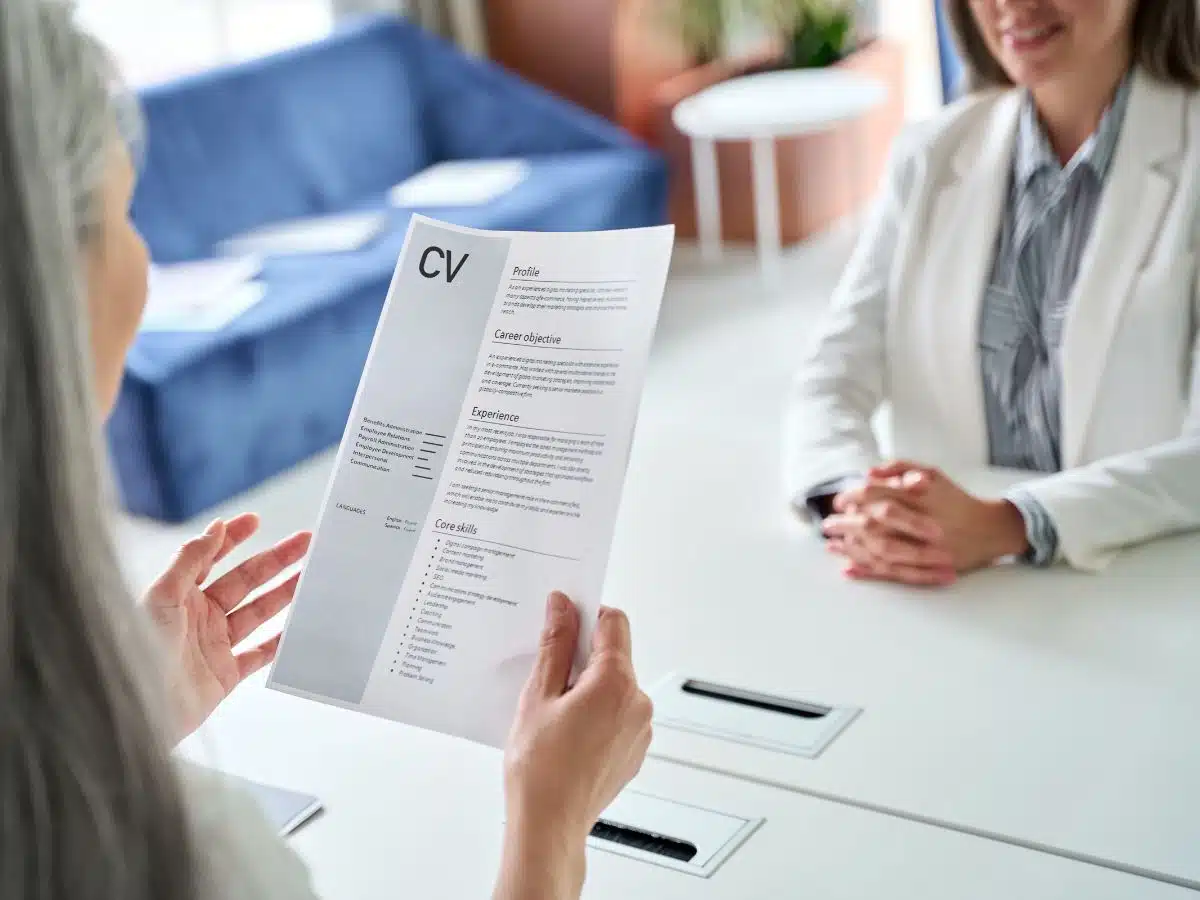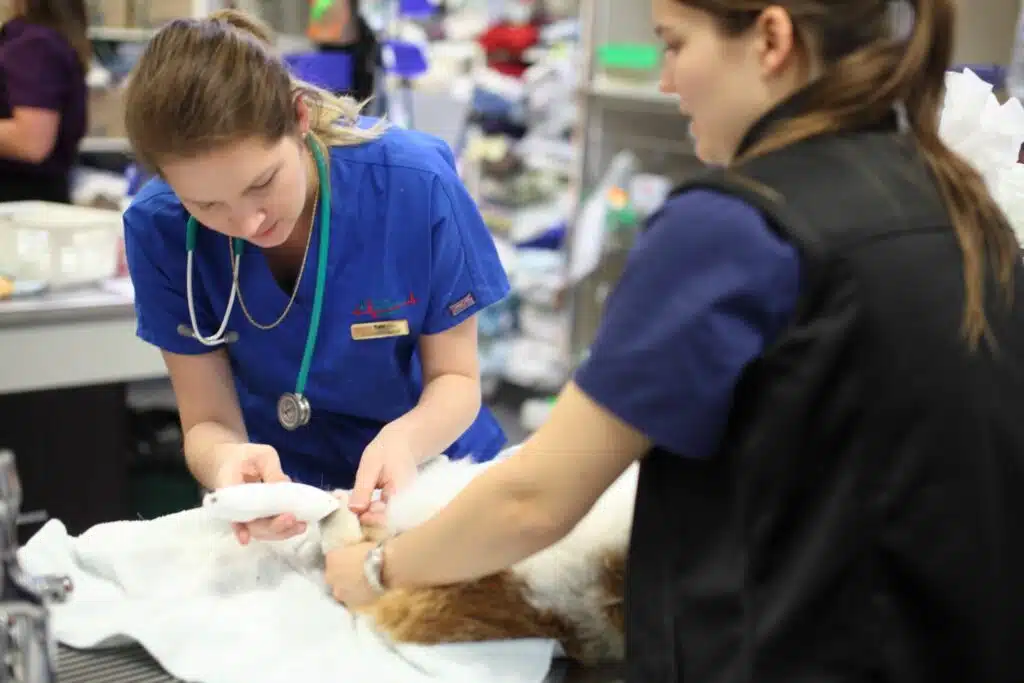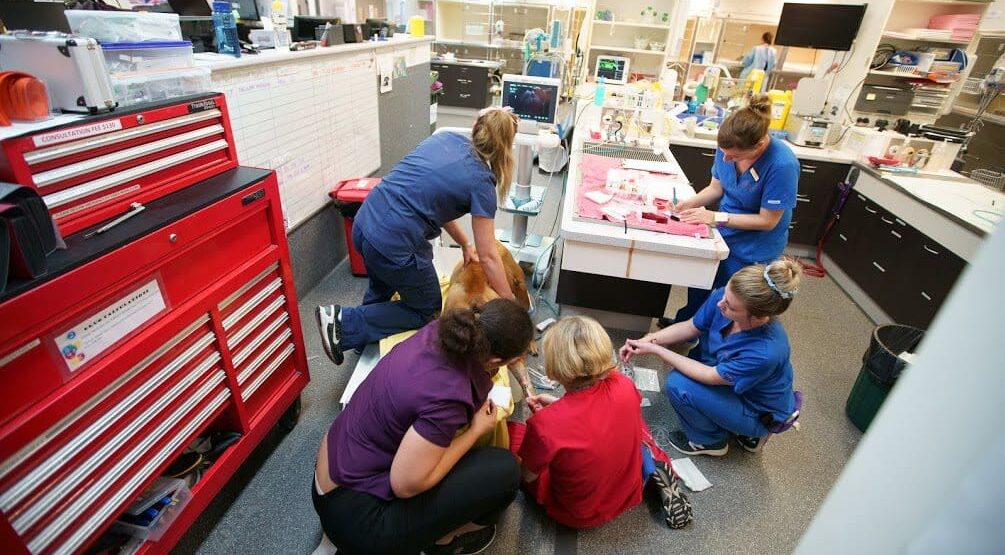Embarking on a career in veterinary medicine is an exciting journey, and your resume is a crucial part of achieving that dream role. In a competitive field where compassion meets technical expertise, crafting a standout veterinary resume is not just a formality but a crucial tool for making a lasting impression on potential employers.
Whether you’re a recent graduate eager to kickstart your career or an experienced veterinarian looking to make a transition, we’ll walk you through the process of creating a resume that not only captures your professional journey but also showcases your passion for animal care. Follow our expert advice and unlock the key to presenting your unique qualifications effectively, setting the stage for a successful and rewarding career in veterinary medicine.

Step 1: Choose the Right Format
Selecting the appropriate resume format is the foundation of a compelling veterinary resume. The format you choose should effectively highlight your strengths and showcase your qualifications. Consider the following options:
- Your Career Stage: If you’re a recent graduate, a chronological format may emphasize your academic achievements and relevant coursework. For experienced veterinarians, chronological or targeted formats may be more effective.
- Highlight Relevant Experience: Tailor the format to emphasize the experiences most relevant to the veterinary position you’re seeking.
- Stay Consistent: Maintain a consistent format throughout your resume for a polished and professional look.
- Optimize for Applicant Tracking Systems (ATS): Many employers use ATS to screen resumes. Ensure your chosen format is compatible and includes relevant keywords.
Remember, the goal is to present your qualifications in the clearest and most compelling way possible. Using a free graphic design service like Canva can be an easy way to lay out your resume in a visually appealing format. Selecting the right format sets the stage for a resume that captures the attention of hiring managers and enhances your chances of securing that ideal veterinary position.
Step 2: Craft a Compelling Summary
Your professional summary serves as the opening statement of your veterinary resume, offering a concise yet impactful overview of your skills, experiences, and career aspirations. A well-crafted summary can capture the attention of hiring managers and set a positive tone for the rest of your resume. Here’s how to create a compelling summary:
- Start with a Strong Opener: Grab the reader’s attention with a powerful opening statement. Share your passion for veterinary medicine and your commitment to delivering high-quality care to animals.
- Highlight Key Qualifications: Showcase your most relevant skills and qualifications. Focus on what makes you uniquely qualified for the veterinary position, such as expertise in surgery, diagnostic imaging, or specialised treatments.
- Mention Experience Level: Clearly communicate your level of experience. Whether you’re a recent graduate eager to apply your education or an experienced veterinarian seeking a new challenge, provide context for your career stage.
- Demonstrate Value: Highlight key achievements or contributions from your previous roles. Use quantifiable metrics to demonstrate the positive impact you’ve had, such as successful surgeries, improved patient outcomes, or increased client satisfaction.
- Show Personality: Infuse your summary with a bit of personality. While maintaining professionalism, let your passion for veterinary medicine shine through. This can make your resume more memorable and engaging.
- Keep it Concise: Aim for a concise summary that is easy to read. Ideally, limit it to 3-4 sentences that encapsulate the essence of your professional identity.
Crafting a compelling summary is your opportunity to make a strong first impression. A well-articulated summary not only introduces you as a candidate but also sets the stage for a comprehensive exploration of your qualifications in the rest of your veterinary resume.

Step 3: Highlight Your Education
Your educational background is a cornerstone of your veterinary resume, providing insight into your foundational knowledge and training. Highlighting your education ensures potential employers quickly grasp your qualifications and academic achievements. Here’s a more detailed guide on how to showcase your education on your veterinary resume:
- Detail Veterinary Coursework: Describe key courses or rotations undertaken during your veterinary education. This provides insights into your areas of specialization or interest.
- Highlight Specialized Training: If you pursued specialized training, residencies, or internships during or after your veterinary program, clearly mention these experiences. They add depth to your qualifications.
- Emphasize Academic Achievements: If you graduated with honours, earned awards, or were part of academic societies, mention these achievements. Academic accolades demonstrate your commitment to excellence.
- Include Ongoing Education: If you’re pursuing additional certifications, coursework, or advanced degrees, mention these ongoing educational pursuits.
- Be Mindful of Space: While education is crucial, ensure a balance in the length of your resume. If you have extensive professional experience, consider providing concise details about your education.
Effectively showcasing your education is essential in establishing your credentials as a qualified veterinarian. By presenting this information thoughtfully, you provide a solid foundation for potential employers to understand your academic background and recognize your commitment to continuous learning in the veterinary field.
Step 4: Showcase Clinical Experience
Highlighting your clinical experience is a pivotal aspect of your veterinary resume, offering prospective employers a detailed look into your hands-on expertise and practical skills. Effectively showcasing your clinical experiences can set you apart in a competitive job market. This can include:
- Focusing on Impact: Highlight how your clinical contributions positively impacted the health and well-being of animals under your care.
- Demonstrating Growth: Showcase how your clinical experiences have contributed to your professional growth and skill development.
- Addressing Gaps Proactively: If you have gaps in your clinical experience, address them proactively in your resume or cover letter. Explain any periods not spent in direct clinical roles.
- Highlight Your Achievements: Where possible, quantify your achievements. For example, mention the number of surgeries performed, the volume of cases managed, or any notable outcomes that showcase your clinical success.
Effectively presenting your clinical experiences is crucial for portraying yourself as a competent and well-rounded veterinary professional. By providing a detailed and organized overview of your hands-on work, you paint a vivid picture of your clinical expertise, ultimately positioning yourself as a strong candidate in the eyes of potential employers.
Step 5: Emphasise Technical Skills
In clinical roles, being able to sell your technical skills demonstrates competency and adaptability. Employers are keen to identify candidates with a diverse set of technical proficiencies. Here’s how you can effectively emphasise your technical skills on your veterinary resume:
- Create a Dedicated Technical Skills Section: Devote a section of your resume specifically to highlight your technical skills. This can be a standalone section or incorporated within a broader skills section.
- Include a Variety of Skills: Enlist a broad range of relevant technical skills applicable to the role you’ve applied for. This may include proficiency in diagnostic imaging, laboratory techniques, anesthesia administration, surgical procedures, and more.
- Provide Examples: Offer specific examples of how you’ve applied your technical skills in clinical settings. Describe situations where you utilized advanced diagnostic tools, performed complex surgeries, or implemented specialized procedures.
- Mention Continuing Education: If you’ve pursued additional training or continuing education to enhance your technical skills, Highlight any certifications or training programs you’ve undertaken. This illustrates a commitment to ongoing professional development.
Effectively emphasising your technical skills not only enhances your resume’s appeal but also positions you as a candidate capable of contributing to the advancement of veterinary practices. By clearly articulating your technical proficiencies, you instil confidence in potential employers about your ability to navigate complex cases.

Step 6: Feature Extracurricular Activities
While your education and clinical experience showcase your professional qualifications, featuring extracurricular activities in your veterinary resume adds a valuable layer to your profile. Extracurricular involvement demonstrates qualities such as leadership, teamwork, and a commitment to the community. So what does this involve?
- Highlight Leadership Roles: If you held leadership positions in any extracurricular activities, even outside of veterinary medicine, emphasise them. Leadership roles indicate your ability to take initiative and manage responsibilities.
- Showcase Volunteer Work: If you’ve volunteered at animal shelters, worked with wildlife, or participated in veterinary outreach programs, highlight these experiences. They underscore your dedication to animal care beyond academic and clinical settings.
- Include Academic and Professional Organisations: Mention your involvement in relevant academic or professional organisations. This could include memberships in student associations, attendance at conferences, or participation in veterinary events.
- Highlight Unique Experiences: If you participated in unique or uncommon extracurricular activities, bring attention to them. These experiences can make your resume memorable and demonstrate your diverse interests.
By featuring your extracurricular activities on your veterinary resume, you present a holistic picture of yourself as a candidate with not only academic and clinical prowess but also a commitment to community, teamwork, and the broader goals of veterinary medicine. This added dimension can make your resume more compelling to potential employers.
Step 7: Craft an Engaging Cover Letter
A resume provides a comprehensive overview of your qualifications, but a well-crafted cover letter is your opportunity to personalise your application. This allows you to express your enthusiasm for the position, and provide additional context to your professional story. Consider these points when crafting your cover letter:
- Personalise Your Greeting: Address the cover letter to the hiring manager or the person responsible for hiring. Personalisation adds a touch of professionalism and shows that you’ve taken the time to research the recipient.
- Highlight Key Accomplishments: Use the cover letter to expand on key accomplishments mentioned in your resume. Provide more context and detail about specific achievements, experiences, or skills that make you a standout candidate.
- Express Your Fit for the Team: Emphasize your ability to work collaboratively with the veterinary team. Showcase your interpersonal skills and commitment to fostering a positive and supportive work environment.
- Connect Past Experiences to Future Contributions: Bridge your past experiences to the contributions you envision making in the new role. Discuss how your background uniquely positions you to excel in the position.
Also, be sure to keep it concise! Aim for a one-page cover letter that is concise and focused. Be selective in the information you include, emphasising the most relevant points. Use a professional tone but take the opportunity to stand out and leave a positive impression on potential employers.

Step 8: Review and Refine
The final step in building a standout veterinary resume involves a thorough review and refinement process. This critical step ensures that your resume is polished, error-free, and effectively communicates your qualifications. Here’s how you can ensure you’re ready to click send:
- Proofread for Errors: Carefully proofread your entire resume to catch any spelling, grammar, or formatting errors. Typos can detract from the professionalism of your application. Having a trusted friend or family member also proofread can be useful.
- Check Consistency: Ensure that formatting, fonts, and styling are consistent throughout your resume. A uniform appearance contributes to a polished and organized presentation.
- Review for Clarity and Conciseness: Evaluate the clarity and conciseness of your content. Remove any unnecessary or redundant information, ensuring that your resume is focused and easy to read.
- Seek Feedback: Request feedback from peers, mentors, or professionals in the veterinary field. External perspectives can provide valuable insights and help you identify areas for improvement.
And of course, don’t hesitate to trim unnecessary details. A concise and focused resume is more impactful. The review and refinement process is the final touch that elevates your veterinary resume from good to outstanding. Take the time to ensure your resume is a true reflection of your skill and experience!
An effective resume can be the key to unlocking new opportunities and paving the way for rewarding veterinary roles. By following these steps and taking the time to tailor your resume to each individual role, you’ll be giving yourself the best chance at making the most of your skills and experience! Once your resume is ready, be prepared and find out all about how to navigate the veterinary job market.




